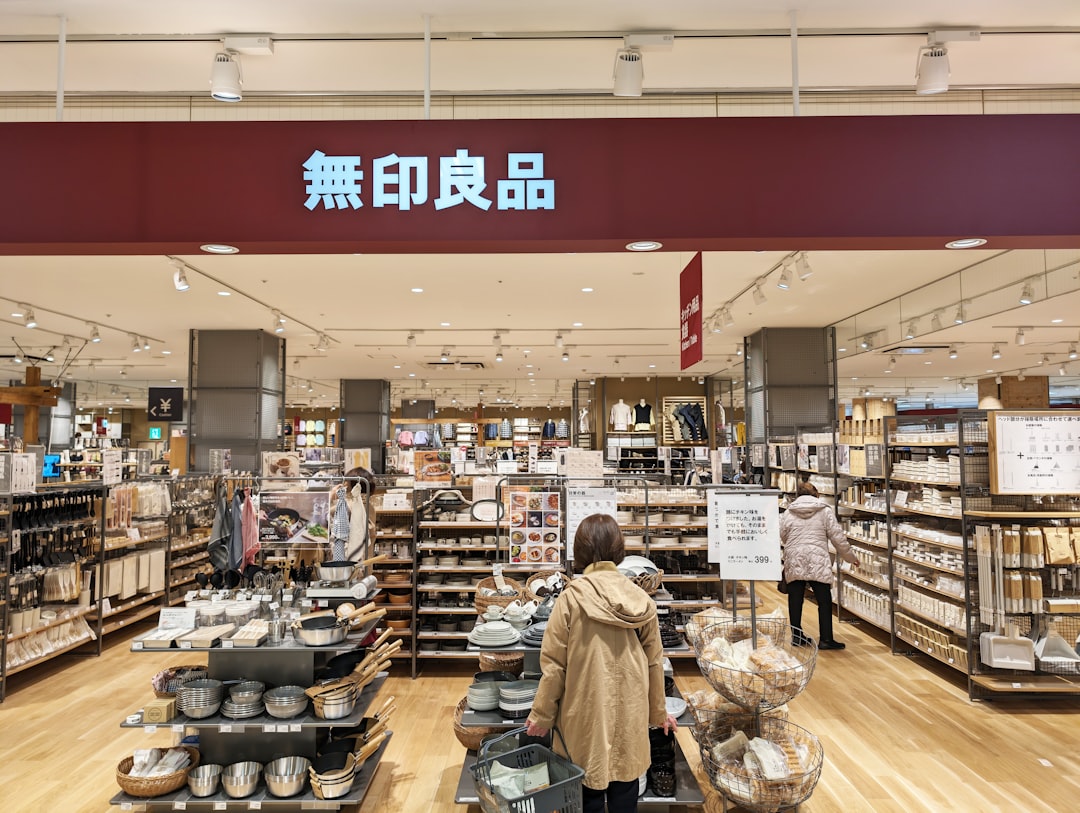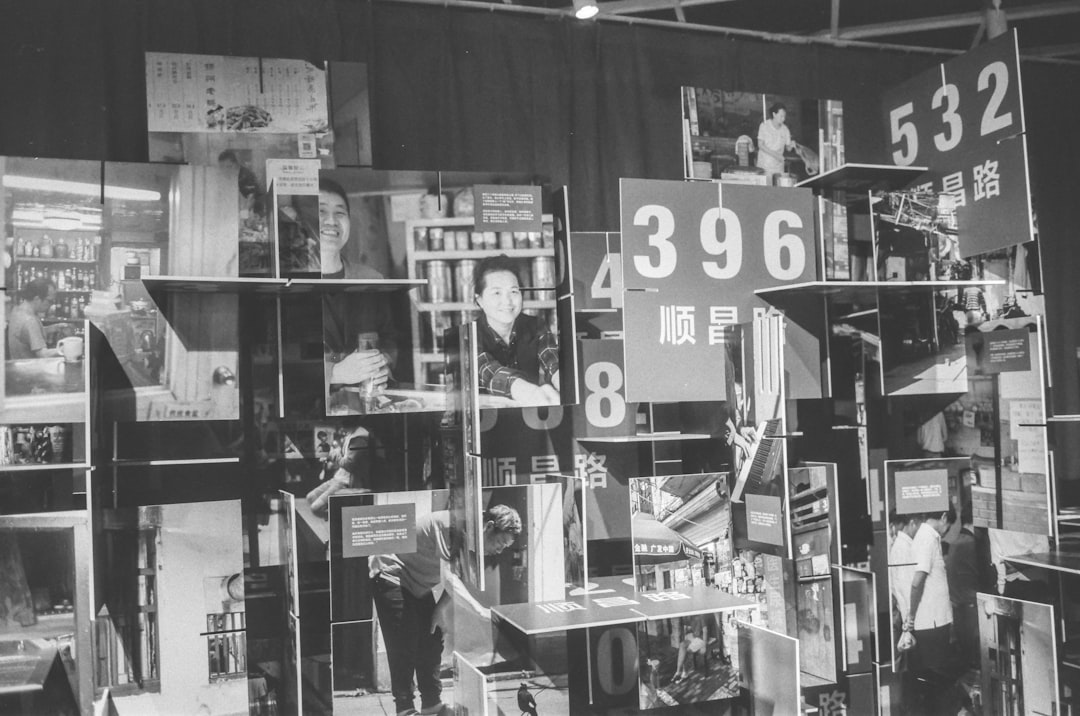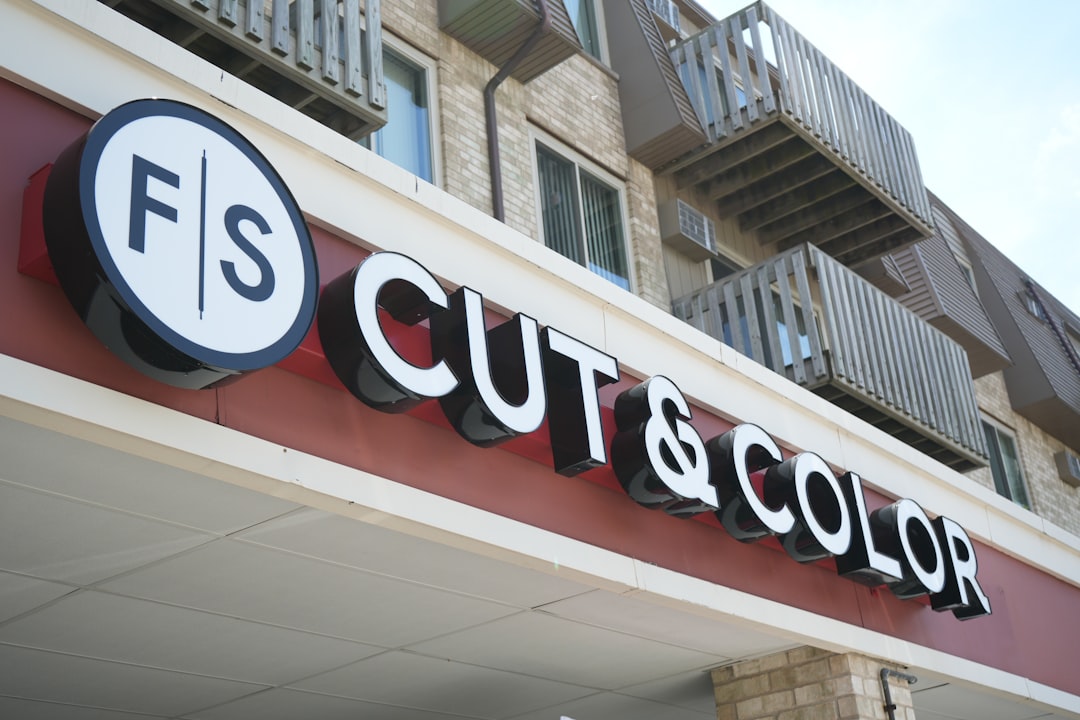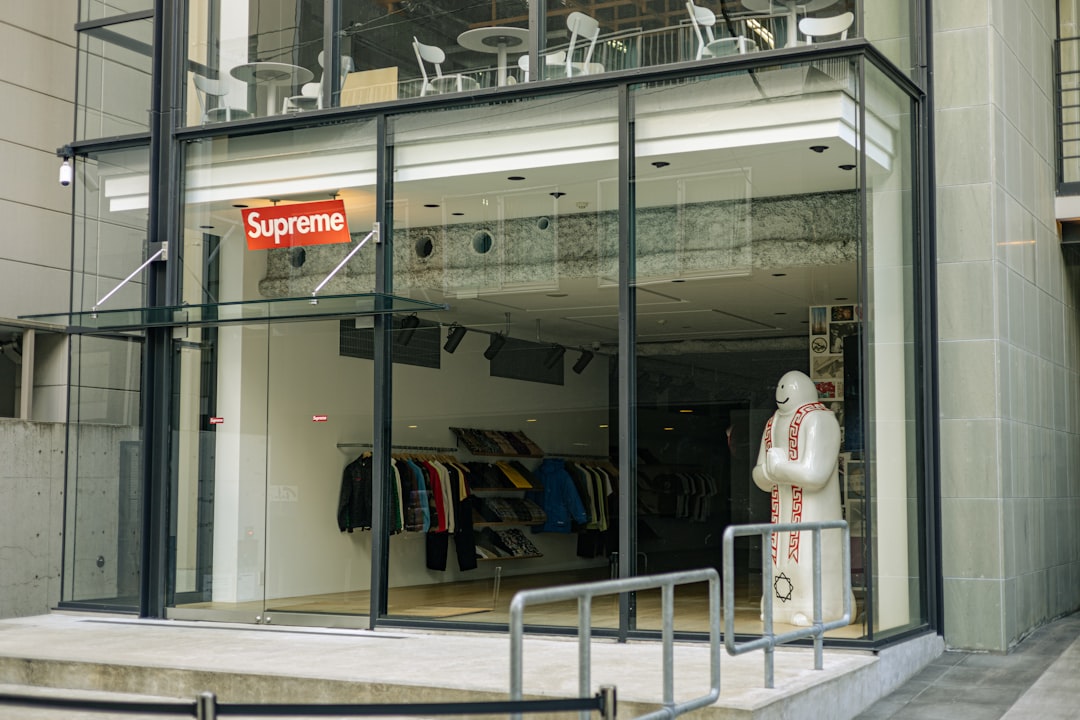

Engage prospects with a scan and streamline customer engagement with FREE QR code marketing tools by Sona – no strings attached!
Create a Free QR CodeFree consultation

No commitment

Engage prospects with a scan and streamline customer engagement with FREE QR code marketing tools by Sona – no strings attached!
Create a Free QR CodeFree consultation

No commitment

Discount stores win on convenience, price, and speed. QR codes amplify those strengths by connecting in-aisle attention to instant digital actions: scanning a code to unlock a coupon, join a loyalty program, view product videos, or submit feedback. The result is a faster path from discovery to conversion, without forcing shoppers to download an app or fill out lengthy paper forms. Even better, every scan produces measurable data that teams can use to optimize campaigns in real time.
Legacy tactics like paper coupons, clipboard sign-up sheets, and static posters make it difficult to track engagement or attribute outcomes. QR-enabled experiences create a clear digital trail and a more responsive marketing engine. When planned with purpose and deployed in the right places, QR codes help discount retailers move from anonymous foot traffic to known, engaged audiences who can be nurtured across channels.
By pairing clear calls to action with thoughtful placement, stores can convert fleeting moments of interest into measurable outcomes. Platforms like Sona QR streamline creation, deployment, and tracking so teams can spend less time managing codes and more time improving results. Start creating QR codes for free.

Discount retail moves quickly, and price-sensitive shoppers make decisions in the moment. Unfortunately, a large share of valuable intent never gets captured. Clerk mentions about loyalty programs are missed, shelf signage blends into the background, and printed coupons cannot be updated or personalized. QR codes address these gaps by transforming static touchpoints into two-way digital experiences that are trackable and easy to optimize.
QR technology also helps unify fragmented marketing efforts. Stores can connect direct mail to digital coupons, tie product tags to reviews, and link receipts to loyalty enrollment. Every scan becomes a data point, revealing what messaging works and where to tune the customer journey. That means less guesswork and more precision in how you allocate budget, staff effort, and shelf space.
Shoppers expect speed and clarity. QR codes meet that expectation while giving marketers a feedback loop that printed collateral alone cannot provide. Over time, stores that embrace QR-powered journeys see more sign-ups, more redemptions, and a deeper understanding of what motivates their audience.

QR codes are flexible and can be tailored to the outcome you want. In discount retail, the most effective formats are the ones that enable instant savings, fast data capture, and seamless post-visit engagement. Choosing the right format ensures every scan maps to a clear action that can be measured and improved.
In practice, stores should start with a core set of formats and destinations that align with top goals: more coupon redemptions, more loyalty enrollments, and better product discovery. Dynamic QR codes are particularly valuable in this environment because offers change often and printed materials need to stay relevant without constant reprinting.
Static QR codes can work for evergreen needs like returning to a homepage or a permanent loyalty landing page. For any campaign where measurement, retargeting, or content updates matter, dynamic codes are the right choice. Tools like Sona QR let you generate both and switch destinations without modifying the printed asset.

The best QR placements align with existing shopper behavior and high-intent moments. Discount stores have an advantage: many touchpoints naturally prompt quick decisions. With the right QR strategy, you can harvest those moments and channel shoppers toward valuable actions like deal activation, loyalty enrollment, and product education.
Consider which parts of your store generate pause points and how shoppers engage with printed materials. Position QR codes where they are easy to notice and scan without disrupting flow. Pair each placement with a benefit-driven call to action that prioritizes clarity over creativity, and explore Sona QR’s use case library for examples.
Evaluate performance by tracking scan rates and conversions at each placement. Over time, you will find that certain aisles, promotions, or CTAs outperform others. Use dynamic codes to redirect underperforming placements to stronger offers without reprinting materials.

QR codes enable a range of high-impact use cases that map directly to core retail outcomes: more revenue, more loyalty, and better insight into customer behavior. The key is to start with a few well-defined scenarios that match how your customers shop and what your team can support operationally.
When planning your initial rollout, prioritize use cases that shorten the gap between interest and action. Align each to a clear metric like redemption rate, sign-up rate, or feedback completion rate. This gives you an immediate read on performance and a path to continuous improvement.
Additional possibilities include QR codes for digital warranties on small appliances, video tutorials for complex products, and price-match policies that link to submission forms. Each adds value to the shopper experience and returns useful data to your team.
Every scan is a behavior signal that can power smarter segmentation. By deploying unique QR codes across locations and use cases, you create natural audience clusters: coupon hunters, loyalty prospects, product researchers, and recent purchasers. With a thoughtful tagging strategy and CRM integration, these signals transform into targeted follow-ups that lift conversion and retention. See intent-driven retargeting for tactics.
A simple framework works well in discount retail: map scans to the stage of the journey, attach metadata about context, and sync to your marketing tools. The goal is to retarget based on real behavior rather than broad assumptions. This improves relevance and keeps messages from feeling generic or intrusive.
With Sona QR, each code can carry structured parameters that automatically populate your CRM fields and audience lists. This ensures that follow-up is not only timely but also context-aware, which is critical for relevance in a fast-moving retail environment.
QR codes are the connective tissue between offline impressions and digital engagement. They unify your marketing by letting customers act the moment they see an offer, and by giving your team a single thread to follow from scan to sale. When deployed alongside your existing channels, QR codes turn traditionally unmeasured touchpoints into measurable, optimizable assets.
The secret is consistency. Use cohesive creative, consistent CTAs, and standardized tagging across channels so scan data rolls up into clean reports. This reduces confusion, enables accurate attribution, and makes optimization a continuous habit rather than a quarterly project.
Centralized platforms like Sona QR let you manage all codes from one place, update destinations without reprinting, and pass performance data to your CRM and ad tools. This creates a seamless feedback loop that elevates every channel where QR is present.
Well-run QR campaigns blend clear objectives, thoughtful design, disciplined deployment, and active optimization. The following steps create a repeatable process your team can use to launch quickly and scale with confidence.
Clarify what business outcome you need now, such as accelerating loyalty sign-ups, moving seasonal inventory, or driving traffic to a weekend sale. Tie the use case to a single primary metric so your team can make fast, data-informed decisions.
Map the shopper’s path to that outcome. For instance, a loyalty enrollment use case may involve codes on receipts, endcaps, and entry signage with a consistent CTA and a small welcome incentive. Document these paths before you design creative to avoid mismatched messaging.
Decide between static and dynamic codes. Use static for unchanging destinations like store hours or a permanent customer service page. Use dynamic for anything that benefits from tracking, A/B testing, or future optimization without reprinting.
If you plan to attribute revenue or trigger downstream workflows, choose dynamic. Sona QR makes it easy to manage destinations, append UTM parameters, and segment scans by campaign, placement, and store location for clean analytics. Start creating QR codes for free.
Design for visibility and clarity. Surround the QR code with white space, add a prominent frame, and use brand colors and logos to inspire trust. Place a benefit-first CTA directly under or next to the code, such as Scan for exclusive savings or Join and save on your next visit.
Test scannability across devices, distances, and lighting. Validate that codes work from arm’s length on shelf tags and from several feet on posters. Check performance with both iOS and Android native camera apps, and confirm that the landing experience is fast and mobile-friendly.
Roll out codes to the placements most likely to influence behavior. Start with endcaps, shelf talkers, price boards, checkout counters, and direct mail. Ensure each placement lines up with the shopper’s mindset at that moment, and keep the CTA consistent across similar touchpoints.
Train staff to point out QR opportunities. A quick mention at checkout or a small badge on employee aprons can significantly lift awareness. Reinforce the benefit to the shopper, not just the action itself.
Instrument every code with UTM parameters and campaign tags. Monitor scan volume, conversion rate, and drop-off points in a unified dashboard. Compare performance by placement, creative, and time of day to identify winners and candidates for iteration.
Run lightweight tests. Try alternative CTAs, different incentive levels, or revised landing pages. Use Sona QR to update destinations without reprinting and to sync scan events with your CRM, enabling automated follow-ups and accurate attribution.
Advanced QR platforms reduce manual work at every stage, from code creation to analytics and retargeting. This frees your team to focus on creative development, associate enablement, and higher-value analysis rather than chasing spreadsheets.
Collecting scans is only the beginning. The true value emerges when you understand how those scans influence purchases, sign-ups, and repeat visits. A robust analytics framework links each scan to downstream actions, enabling precise attribution and continuous optimization of both offers and placements. Done well, QR can help boost sales without adding friction.
Discount retailers benefit from a few core metrics: scan-through rate by placement, conversion rate by use case, and revenue influenced by QR-originated sessions. Monitoring these over time reveals which campaigns deserve more budget and which need rework, creating a virtuous cycle of improvement.
Sona QR and Sona.com provide a connected stack for capturing real-world engagement and attributing it to revenue. Use identity resolution, UTM discipline, and multi-touch attribution to see how QR fits into the wider path to purchase and to justify scaling the tactics that work best.
Once the basics are in place, small improvements compound into significant gains. Focus on clarity of the offer, visibility of the code, and the speed of the landing experience. Combine these with smart automation and associate enablement to multiply your results over time.
Consider also the lifecycle of your printed materials. Build QR into reusable assets like entry signs and cart inserts, then rotate the destinations seasonally. Consistent scan locations paired with dynamic content create a steady stream of measurable engagement without constant reprints.
Use Sona QR to generate, tag, and measure all codes in one place. As results come in, run simple A/B tests on CTAs and offers, then feed learnings back into your creative and merchandising strategies. For inspiration, explore these QR code marketing ideas.
Discount retail thrives on immediacy. QR codes make immediacy measurable and repeatable by turning every surface into a portal for action. Whether the goal is more loyalty sign-ups, faster coupon redemptions, or richer product education, QR-driven experiences shorten the path from interest to outcome and create a data trail your team can use to improve.
By integrating QR codes across print, in-store, and digital channels, discount stores close the loop between offline interactions and online conversions. With dynamic codes, centralized analytics, and automated follow-ups, you can evolve from untracked impressions to a connected, performance-driven marketing system. Tools like Sona QR bring this ecosystem together so you can capture demand at the source, attribute impact with confidence, and scale what works across every store and campaign.
QR codes have revolutionized the discount store industry by transforming traditional shopping interactions into dynamic, measurable opportunities for growth. Whether it’s driving customer acquisition through exclusive deals, enhancing in-store experiences with instant product information, or enabling seamless mobile checkouts, QR codes turn every touchpoint into a powerful conversion driver. Imagine knowing exactly which promotions attract the most shoppers and being able to optimize your campaigns instantly to maximize sales.
With Sona QR, creating dynamic, trackable QR codes is effortless. Update offers on the fly without costly reprints, connect every scan to real revenue, and gain actionable insights that help you fine-tune marketing efforts in real time. No more guesswork—just smarter, data-driven campaigns that boost foot traffic and increase basket size.
Start for free with Sona QR today and unlock the full potential of QR codes to drive conversions and elevate your discount store’s success.
QR codes placed at high-intent zones like endcaps, checkout lanes, and entrance displays convert shopper attention into instant digital actions, encouraging visits and engagement without requiring app downloads.
Effective strategies include targeting high-intent locations, replacing paper coupons with instant mobile experiences, assigning clear goals for each QR code, using dynamic codes for real-time tracking, and automating follow-up communications.
QR codes on shelf tags or wobblers can unlock limited-time or member-only savings, creating scarcity and immediacy that drive scans and track which offers generate the most engagement.
QR codes provide instant engagement, frictionless access without apps or paper, dynamic content updates, detailed data tracking, and cost efficiency by allowing digital destination updates without reprinting materials.
Stores can use dynamic QR codes with unified dashboards to monitor scan volume, conversion rates, location, device data, and tie interactions to downstream sales and sign-ups for precise attribution and continuous optimization.
Use Sona QR's trackable codes to improve customer acquisition and engagement today.
Create Your FREE Trackable QR Code in SecondsJoin results-focused teams combining Sona Platform automation with advanced Google Ads strategies to scale lead generation

Connect your existing CRM

Free Account Enrichment

No setup fees
No commitment required

Free consultation

Get a custom Google Ads roadmap for your business






Launch campaigns that generate qualified leads in 30 days or less.
